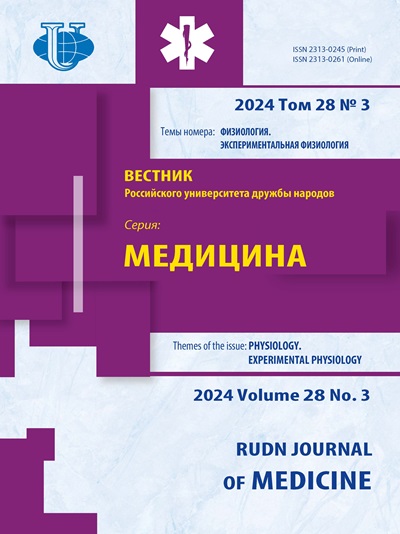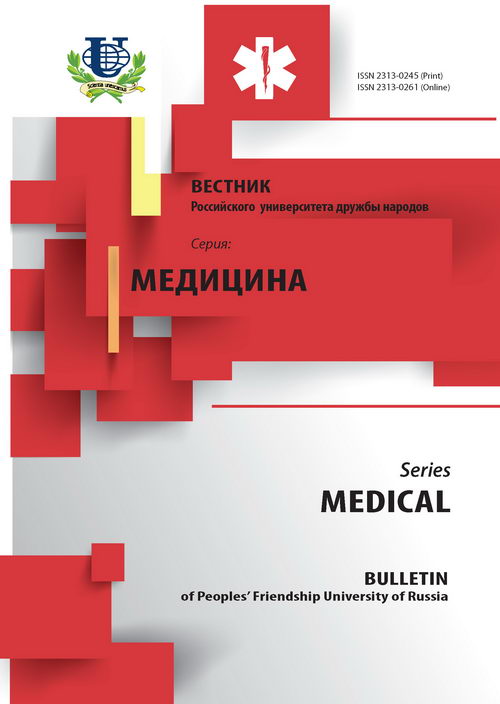Перспективы использования современных методов лекарственной терапии миомы матки
- Авторы: Стыкин Я.О.1, Галина Т.В.1
-
Учреждения:
- Российский университет дружбы народов
- Выпуск: № 2 (2016)
- Страницы: 202-207
- Раздел: Статьи
- URL: https://journals.rudn.ru/medicine/article/view/3351
Цитировать
Полный текст
Аннотация
В представленном обзоре литературы рассматриваются варианты лечения миомы матки у женщин репродуктивного возраста, основанные на современных возможностях патогенетической терапии.
Ключевые слова
Об авторах
Ярослав Олегович Стыкин
Российский университет дружбы народов
Email: stikyar@inbox.ru
Татьяна Вадимировна Галина
Российский университет дружбы народов
Email: tatyana.galina1@mail.ru
Список литературы
- Carbonell J.L., Acosta R. et al. Treatment of Uterine Myoma with 2.5 or 5mg Mifepristone Daily during 3 Months with 9 Months. Posttreatment Followup: Randomized Clinical Trial. 2013. No. 2. P. 2-6.
- Chwalisz K., DeManno D., Garg R. Therapeutic potential for the selective progesterone receptor modulator asoprisnil in the treatment of leiomyomata. Semin. Reprod. Med. 2004. Vol. 22. Iss. 2. P. 113-119.
- Croxtall J.D. Ulipristal acetate: in uterine fibroids. Drugs. 2012. Vol. 72. Iss. 8. P. 1075-1085.
- Cobellis L., Pecori E., Cobellis G. Comparison of intramural myomectomy scar after laparotomy or laparoscopy. Int. J. Gynaecology Obstetrics. 2004. Vol. 84. Iss. 1. P. 87-93.
- Donnez J., Tatarchuk T.F., Bouchard P. et al. Ulipristal acetate versus placebo for fibroid treatment before surgery. N. Engl. J. Med. 2012. Vol. 366. Iss. 5. P. 409-420.
- Donnez J., Tomaszewski J., Vazquez F. et al. For the PEARL III Study Group. Long term treatment. Gynecology and Menopause. 2014. P. 9-18.
- Donnez J., Tomaszewski J., Vázquez F. et al. Ulipristal Acetate versus Leuprolide Acetate for Uterine Fibroids. N. Engl. J. Med. 2012. Vol. 366. P. 421-432.
- Engman M., Granberg S. et al. Mifepristone for treatment of uterine leiomyoma. A prospective randomized placebo controlled trial. Hum. Reprod. 2009. No. 8. P. 18-21.
- Hoellen F., Griesinger G., Bohlmann M.K. Therapeutic drugs in the treatment of symptomatic uterine fibroids. Expert Opin Pharmacother. 2013.
- Levens E.D., Potlog-Nahari C. et al. CDB-2914 for uterine leiomyomata treatment: a randomized controlled trial. Obstet. Gynecol. 2008. Vol. 111. Iss. 5. P. 1129-1136.
- Lethaby A., Vollenhoven B. Fibroids (uterine myomatosis, leiomyomas). Clin. Evid. (Online). 2011.
- Maruo T., Ohara N. et al. Lessons learned from the preclinical drug discovery of asoprisnil and ulipristal for non-surgical treatment of uterine leiomyomas. Expert Opin. Drug Discov. 2011. Vol. 6. Iss. 9. P. 897-911.
- Melis G.B., Piras B. et al. Pharmacokinetic evaluation of ulipristal acetate for uterine leiomyoma treatment. Expert Opin. Drug Metab. Toxicol. 2012. Vol. 10. P. 34-38.
- Radzinsky V.E., Fuks A.M. Gynecology. Geotar-media, 2014. Р. 1000.
- Roeder H., Jayes F. et al. CDB-4124 does not cause apoptosis in cultured fibroid cells. Reprod. Sci. 2011. Vol. 18. Iss. 9. P. 850-857.
- Su Y., Lian Q.Q., Ge R.S. Contraceptives with novel benefits. Expert Opin. Investig. Drugs. 2012. Vol. 21. Iss. 1. P. 83-90.
- Shtoch E.A., Tschai V.B. Uterine leiomyoma. Modern understanding of the pathogenesis and risk factors. Siberian medical review. 2015. No. 1. Р. 45-48.
- Szamatowicz М., Kotarski J. Selective progesterone receptor modulator (ulipristal acetate-a new option in the pharmacological treatment of uterine fibroids in women. Ginekol. Pol. 2013. Vol. 84. Iss. 3. P. 219-222.
- Tristan M., Orozco L.J. et al. Mifepristone for uterine fibroids. Cochrane Database Syst. Rev. 2012. No. 2.
- Tichomirov A.L. New features of pathogenetic treatment of uterine fibroids. Gynecology. 2013. Vol. 6. Iss. 15. P. 36-38.
- Radzinsky V.E., Totchiev G.F. Uterine fibroids: a course on organ preservation. News bulletin. Media bureau Status Presens. 2014. P. 24.
- Yoshida S., Ohara N. et al. Cell-type specific actions of progesterone receptor modulators in the regulation of uterine leiomyoma growth. Semin Reprod Med. 2010. Vol. 28. Iss. 3. P. 260-273.
















